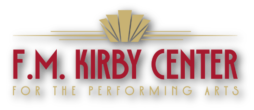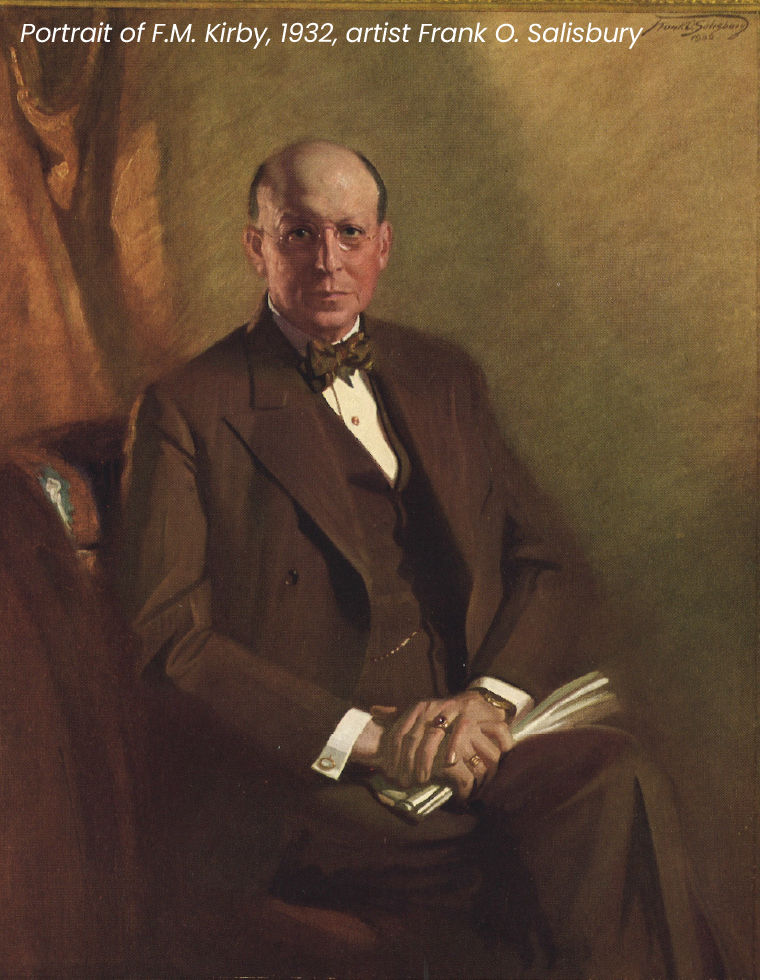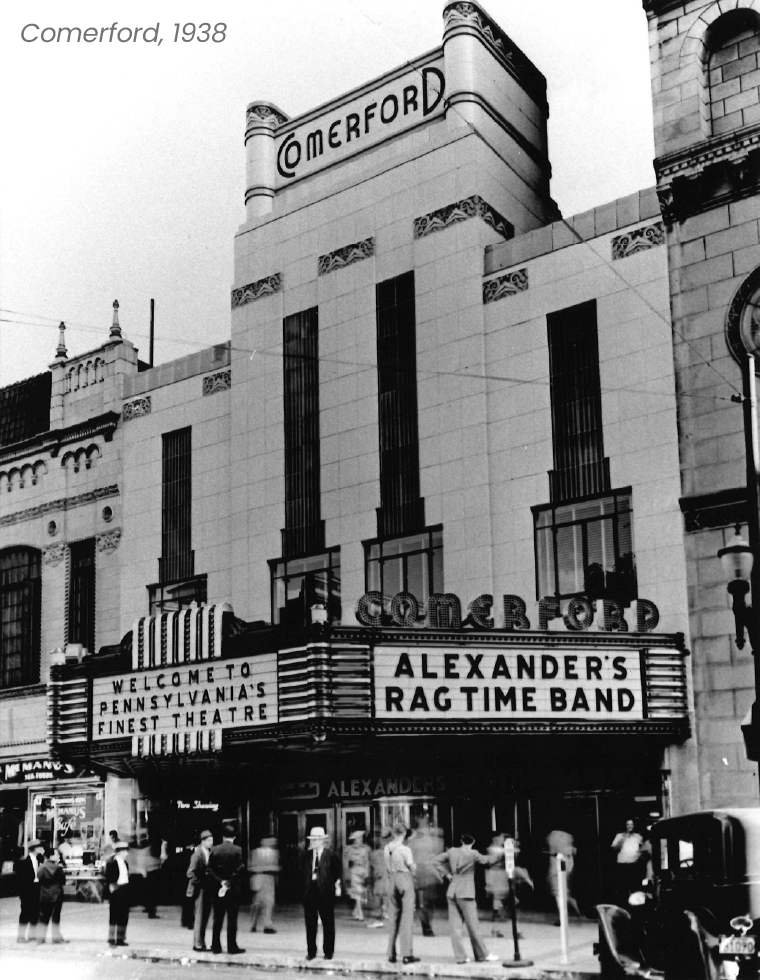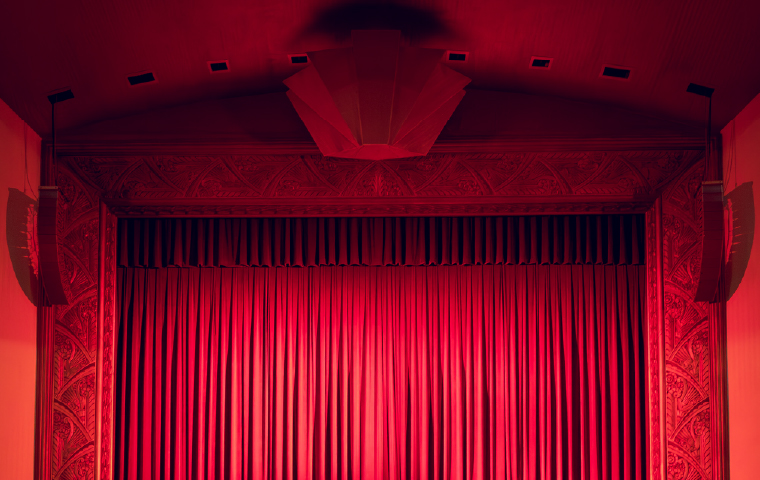About Us
About the Kirby Center
Our History
The F.M. Kirby Center for the Performing Arts has served the Wyoming Valley and beyond since 1986, but the theater we call home has welcomed patrons through its impressive brass doors for almost a century!
That theater was an Art Deco dream.
Inside were five lobbies decorated with oval rose-colored mirrors, high-fluted columns, and walls adorned with copper tints in shades of metallic blue. The elegant centerpiece, a large cylindrical chandelier called Giant Lavaliere, can still be seen hanging between the staircases to our mezzanine lobby.
With a capacity of nearly 2,000, the Comerford Theater was the largest in the area—it was also one of the most advanced, with air conditioning, hearing aid-equipped seats, and a nursery with an on-staff matron.
After 11 years of business, ownership of the Comerford Theater was transferred to Penn Paramount Company as part of a 1949 anti-trust lawsuit. It became the Paramount Theater.
In the 1970s, the theater was besieged by a number of challenges.

In 1972, Hurricane Agnes caused flooding that impacted life throughout the entire region—the Paramount Theater wasn’t spared and found itself under 14 feet of flood water. Despite that
monumental natural disaster, the theater survived to face a new foe: the introduction of shopping malls and the cineplexes that accompanied them. The eventual change in shopping habits took foot traffic away from Public Square, and in 1977, the cost of operating a single-screen building became too much for Penn Paramount.
During the late 1970s and early 1980s, the space was used as a venue for touring concerts and closed-circuit television boxing matches. Then, to accommodate various small business operations, the box office lobby was gutted. Luxurious fluted lights were sold, or demolished, brass and bronze door frames were cut, and the brass and marble exterior ticket booth was removed. The historical building was on its way to being demolished.
Fortunately, residents banded together to form Save the Old Paramount or S.T.O.P. In 1978, their work led to the building being added to the National Register of Historic Places, but the theater remained unused—until 1985.
As the owner of one of the nation’s largest privately-owned department store chains, Albert Boscov was no stranger to Wilkes-Barre. A few years earlier he had purchased one of the last remaining downtown department stores, Fowler, Dick and Walker – The Boston Store. Something about Albert’s retail philosophy connected with the people of Wilkes-Barre, whose patronage of the first multi-story Boscov’s proved that a downtown shopping destination was still viable.
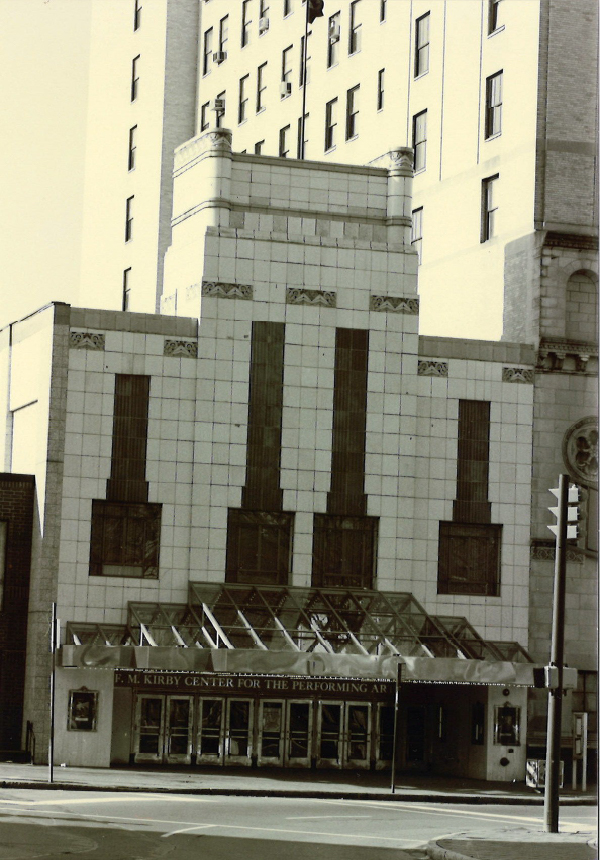
When Albert began searching for a way to say thanks to the community, he didn’t have to look very far—a beloved former movie theater sat only a block away from his department store.
In 1985, Boscov formed a team of civic and business leaders, including August L. Simms and had the invaluable assistance of Fred M. Kirby II and the Kirby Foundation. They organized a drive to raise $3.3 million for the acquisition and restoration of the theater, and the Wyoming Valley stepped up to show their support.
Grade school students sent gifts. Unions contributed wage give-backs. Fred M. Kirby II provided a major gift to name the theater after his father, a pioneer of 5-and-10-cent stores who developed the concept on Wilkes-Barre’s East Market Street). Everyone gave what they could, and on Friday, September 19, 1986, the F.M. Kirby Center opened its doors. The gala event included the American Ballet Theatre’s premiere of its Celebration Tour, featuring prima ballerina Cynthia Gregory and the Northeastern Pennsylvania Philharmonic. Additionally, the Wilkes-Barre Ballet Theatre performed to Ravel’s “Bolero,” and the performance was choreographed by the ballet’s director, Mary L. Hepner.
The building—a work of art in its own right—was revitalized in its original Art Deco style with tones of maroon, rose, and gold along with a stunning proscenium frame and friezes.
In 2006, the F.M. Kirby Center celebrated 20 years of community service.
The “Take Your Seats, Please” fundraiser campaign raised $750,000 for major theater refurbishment and entitled donors to name plaques that can still be found on our seats today. Current visitors will also find lobbies surrounded by hand-painted gold wallpaper and covered in carpeting recreated from photographs of the building taken in 1938. The theater itself is equipped to serve 1,832 patrons, including those with disabilities.
Since opening, the nonprofit has welcomed millions of guests through its doors for everything from Broadway musicals and opera to ice skating and cattle auctions. Community members have taken in performances from music legends like Johnny Cash, Aretha Franklin, and Tony Bennett, superstar comedians like Jerry Seinfeld, and classic stage productions like Cats. While we’re proud to continue presenting timeless talents, we’re also honored to play host to milestone events like graduations and weddings, as well as speaking engagements for politicians and fundraising events for other local nonprofits.
As we near our 37th year of operation, the F.M. Kirby Center for the Performing Arts finds itself firmly grounded in its heritage while looking towards its future. The organization’s new logo and visual identity reflect its Art Deco roots while incorporating modern sensibilities that invite a new generation of showgoers to fall in love with the theater. A continued commitment to downtown Wilkes-Barre helps make an annual economic impact of $9.8 million for downtown businesses. A staff of dedicated professionals, a group of devoted volunteers, and a community of generous donors all work together to ensure the next generation of art enthusiasts have an exciting answer to the question:
